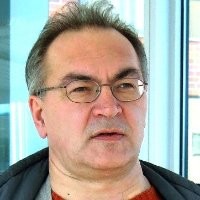Aging brains need exercise, not sofas for neurons
Neuroscientist Yuri Danilov reassures seniors, we do not lose neurons as we ageIn a recent podcast, Walter Bradley Center director Robert J. Marks interviewed University of Wisconsin neuroscientist Yuri Danilov on the remarkable way our brains adapt to new circumstances (neuroplasticity).
Our brains must adapt, whether to catastrophic physical injuries that cause blindness or partial paralysis or just plain old age. How can we help?
Neuroplasticity: How Your Brain Never Stops Changing
Danilov was a student of Paul Bach-y-Rita, (1934–2006), a neuroplasticity pioneer. In conversation with Marks, he reveals—among other things—that he has met many sighted people who found that they could not learn to use Braille, the reading system developed by a blind man, Louis Braille (1809–1852), for persons who are blind. Yet, he observes, blind people learn the system in a matter of hours. Neuroplasticity favors those who really need it because it uses a neural pathway that is otherwise unused to do something very much needed.
But why do we find it harder to learn as we age? What goes wrong with the aging brain?
We are often told that the aging brain is losing neurons. That, Danilov assures us, is not the problem. The neurons are still there.
Rather, older people may face a desynchronization between sensory and motor neurons (our senses and our muscles are not always dancing to the same beat). But, he says, the older brain can arrive at the same learning results given more time.
That’s really good news. Most important decisions in life can wait a few hours or a day. Maybe it’s better that way.
Danilov also stresses the importance of remaining mentally active, which keeps the neurons growing: “If you do not exercise the brain, they start to lose branches and lose connections. That’s a perfect example of neuroplasticity, the number of physical branches on the axonal tree, number of synoptical connections, size of each synoptical connection, that might be changed by activity. If you act, the neurons sprout, so they are growing new branches. If they are not active, they start to prune itself. They start to lose a branch, lose connections.” [12:51]
So yes, our neurons are still there in old age but they do need to get out more and get some exercise!
Note: Blindsight is an interesting illustration of neuroplasticity: “When the visual cortex of the brain is damaged but the eyes themselves are sound, some blind people show the ability to sense objects that they do not consciously experience seeing. The eyes appear to adapt to working with parts of the brain which the person does not consciously experience.” That makes more sense if you consider that most of our sensory nervous systems’ activities are not consciously experienced as such. We mainly experience the outcome.
Further reading on neuroplasticity and the realistic hope for healing of brain injuries:
How the Injured Brain Heals Itself: Our Amazing Neuroplasticity Jonathan Sackier is a pioneer in non-invasive techniques for speeding the healing of traumatic brain injuries
If Thinking Can Heal, Why Do We Need Antidepressants? J.P. Moreland, who struggles with anxiety disorders, likens medications to engine oil for the brain
Mind-controlled robot brain needs no brain impant
and
The placebo effect is real, not a trick. But the fact that the mind acts on the body troubles materialists. Such facts, they say, require revision

